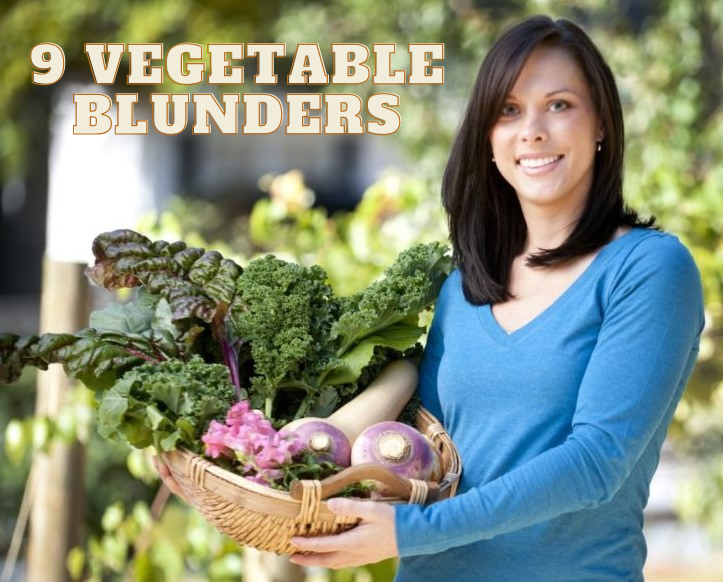by Ken Lain, the mountain gardener


As we progress into the vegetable planting season, the potatoes, garlic, kale, and lettuce are already planted. The summer edibles will take center stage with the last frost quickly approaching.
Garden success often depends on things out of our control, including rainfall, temperature, and soil type, to name a few. Here are the personal mistakes I wish readers to avoid as we plant the spring gardens.
Mistake #1: Starting Too Early
Gardener and impatient are used in the same sentence. The planting season starts in March, but frost is expected through April. Ensure early garden plants can take the freeze-thaw cycle the Central Highlands are famous for. Leafy plants like broccoli, cabbage, peas, and parsley love this early spring weather.
The first of May is our local last frost. You will find the most extensive vegetable selection when you shop early, but have a plan to protect them if a late frost is predicted. Otherwise, you will be back at the garden center buying more plants. Vegetable Calendar for Mountain Gardens
Mistake #2: Garden in the Wrong Spot
A vegetable garden should be conveniently handy. In days zucchini grow to the size of bowling pins, or rabbits break through your fence and finish the peas. Daily visits are needed later in the summer.
Vegetables require 6+ hours of sun per day. Too little, and the fruits are small without flavor. A hose or water can is needed until summer monsoon rains arrive. The closer the garden is to water, the easier it is to irrigate.
Mistake #3: Going Cheap on Soil and Plant Food
Plants use up garden soil as they grow. Starting off with poor Soil ensures a struggle all season. Refresh annually with Barnyard Manure and Premium Mulch at the start of every planting season. Containers and Raised beds need fresh Potting Soil that revitalizes pots. Earthworms are always a good sign.
Use water-soluble Flower Power twice monthly for a fantastic vegetable harvest. Watters Fruit and Vegetable Food is even better for more extensive gardens.
Mistake #4: Picking too Slow
Enjoy your vegetables while at their peak. A plant won’t set more cucumbers or peppers if its branches are already full. Herbs, like basil and cilantro, benefit from frequent harvesting.
Mistake #5: Planting Too Many
Planting more than you can eat or even care for is common. Start with varieties you enjoy or can not purchase fresh locally. Learn how to grow them and expand your repertoire. It is best to enjoy success with a smaller garden than struggle to keep up with a large one.
Here’s my list of the Easiest Vegetables to Grow in the Garden
Mistake #6: Laps of Spacing
Seeds of lettuce, carrots, and beets are planted close and thinned as you harvest. Plants set out as seedlings, like tomatoes and peppers, or large plants, like corn and beans, need much more space at maturity. If squashes, pumpkins, and cucumbers are in your garden, they require even more room.
Square Foot Gardening – To make the best use of space, interplant early vegetables like spinach, radish, and lettuce underneath or around those that require a longer growing season.
Mistake #7: Deferred Maintenance
Different vegetables have different needs. Tomatoes need water at ground level. Overhead watering can encourage diseases and blights. Vegetables like corn, lettuces, and broad-leaf plants like squashes are more tolerant of overhead irrigation.
Weeds take water and nutrients from your vegetables. They also provide cover for bugs carrying disease and eat your garden. Your hoe may be the best tool in the shed.
Mistake #8: Letting the Animals In
The need for a sturdy fence cannot be overstated. Deer, javelina, rabbits, and gophers can wipe out a garden overnight. Planting vegetables is like ringing the dinner bell.
Mistake #9: Not Dealing with Problems Early
Monitor your plants regularly. Yellowing leaves or spots are best corrected before the entire row is infected. Catch insects early before they take over. Problems like blossom end rot are remedied simply by removing the affected fruit.
Vegetable gardening is an ongoing learning experience made up of lots of small successes and some failures. Begin with good soil, quality seeds, and regular garden practices, and success follows.
Until next week, I’ll be helping gardeners plant better vegetable gardens here at Watters Garden Center.
Ken Lain can be found at Watters Garden Center, 1815 Iron Springs Rd in Prescott, or contacted through his website at WattersGardenCenter.comor Top10Plants.com

